
Get In Touch
Request more info or book a tour.
Fill in the form and we'll get back to you in no time!
Most travelers think of Mongolia as endless steppe, horses and Genghis Khan.
However, hidden in the far north of the country, deep in the remote taiga forests near the Russian border, live the Tsaatan, one of the world’s last remaining reindeer-herding peoples.
On this immersively unique expedition, we’ll travel across Mongolia for several days, sleeping next to Buddhist monasteries, staying in ger camps with yak breeders, until we finally reach the isolated nomadic camp of the Tsaatan people, learning about a nomadic lifestyle they’ve preserved since ancient times.
Join us I discovering off-the-beaten-track Mongolia.
June 23rd to July 2nd, 2026
€1890
10 days
Led by Leti Lagarda
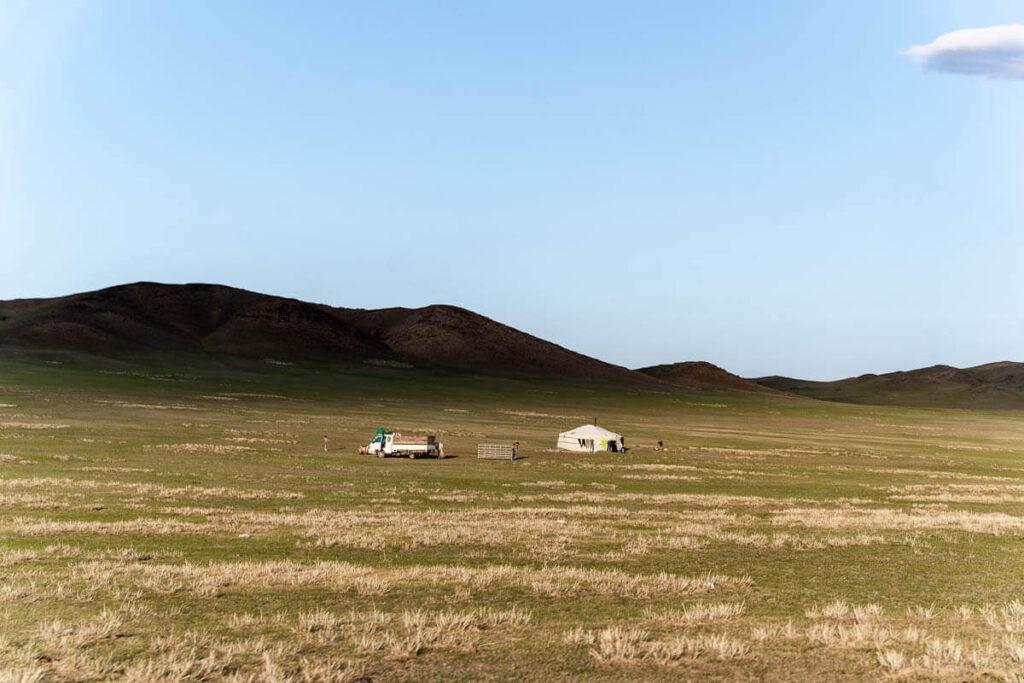
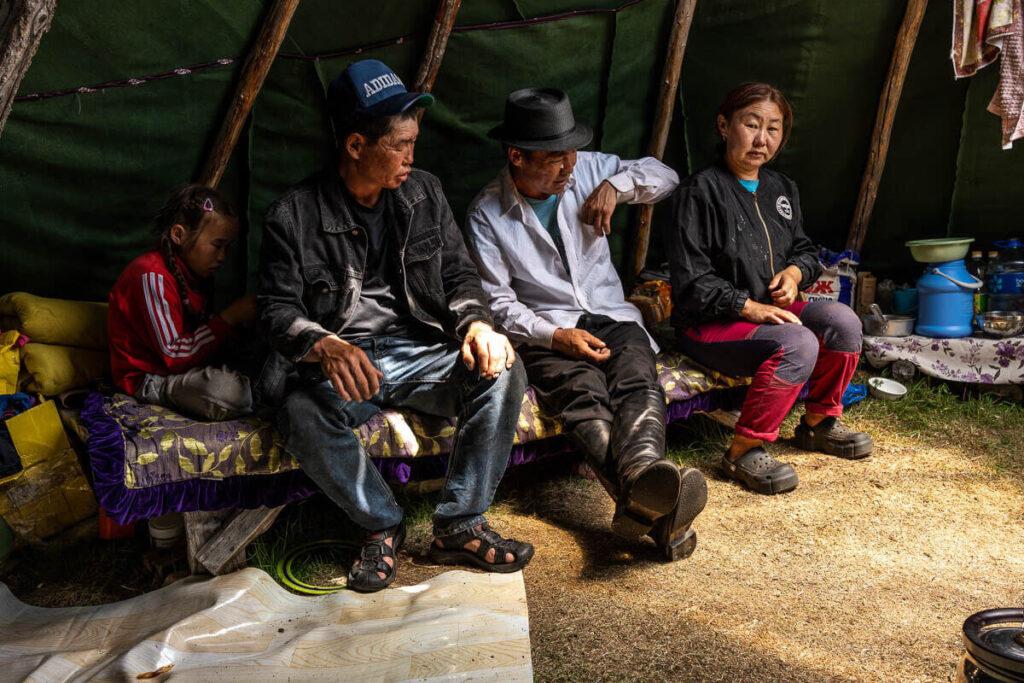
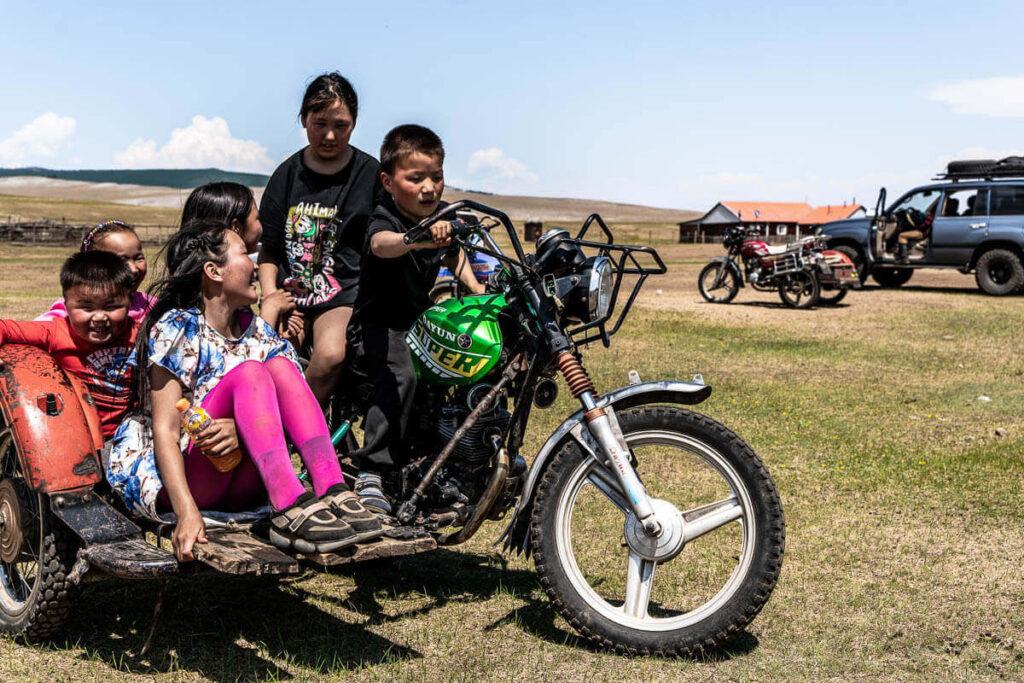
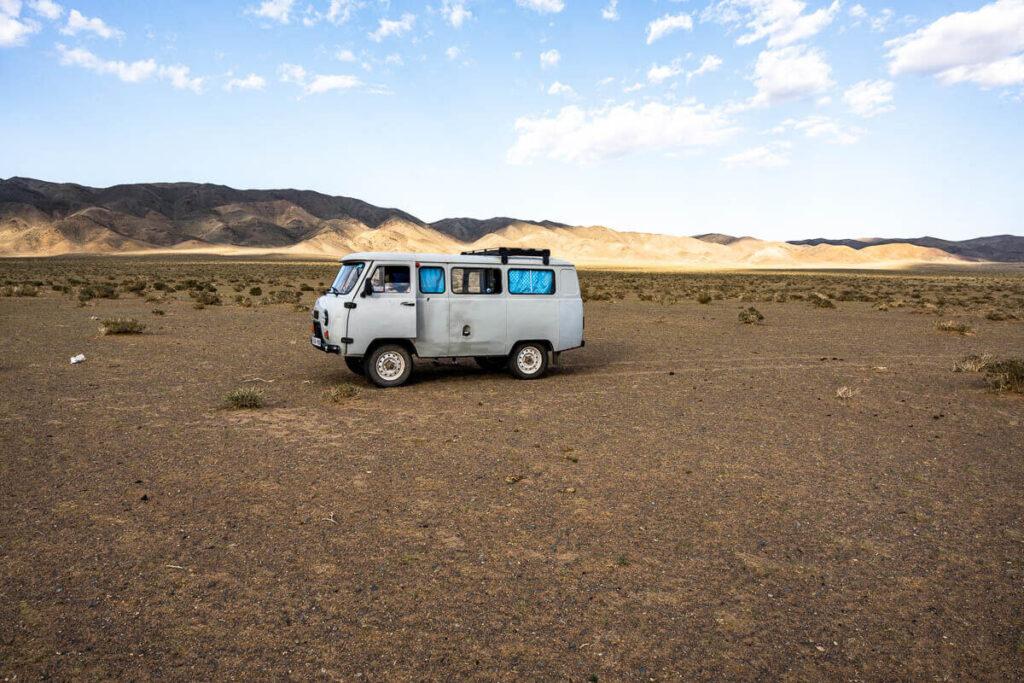
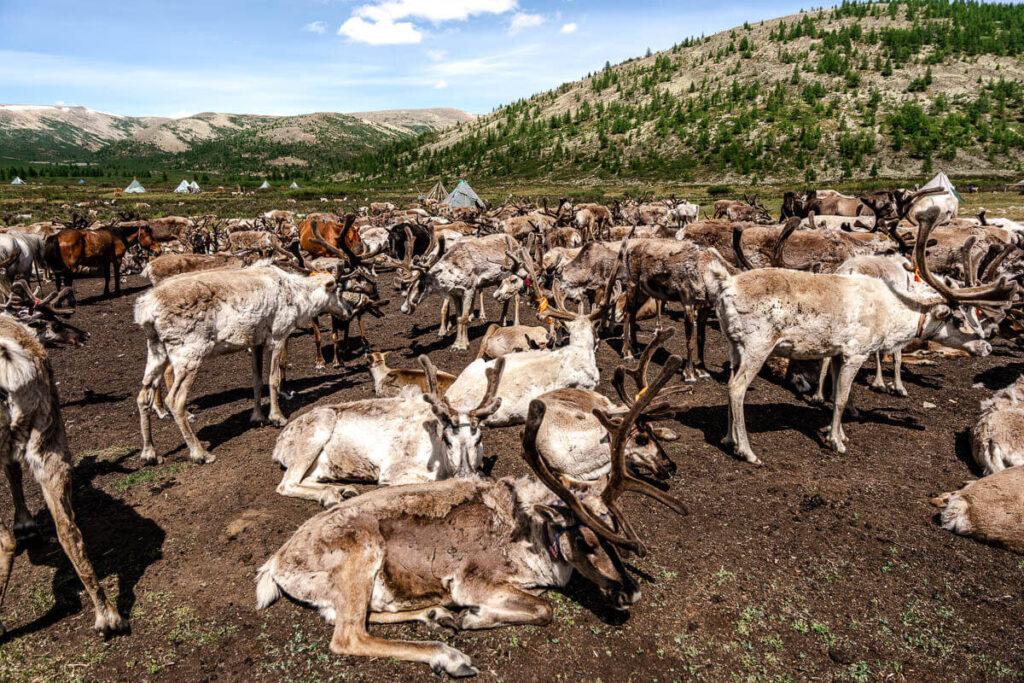
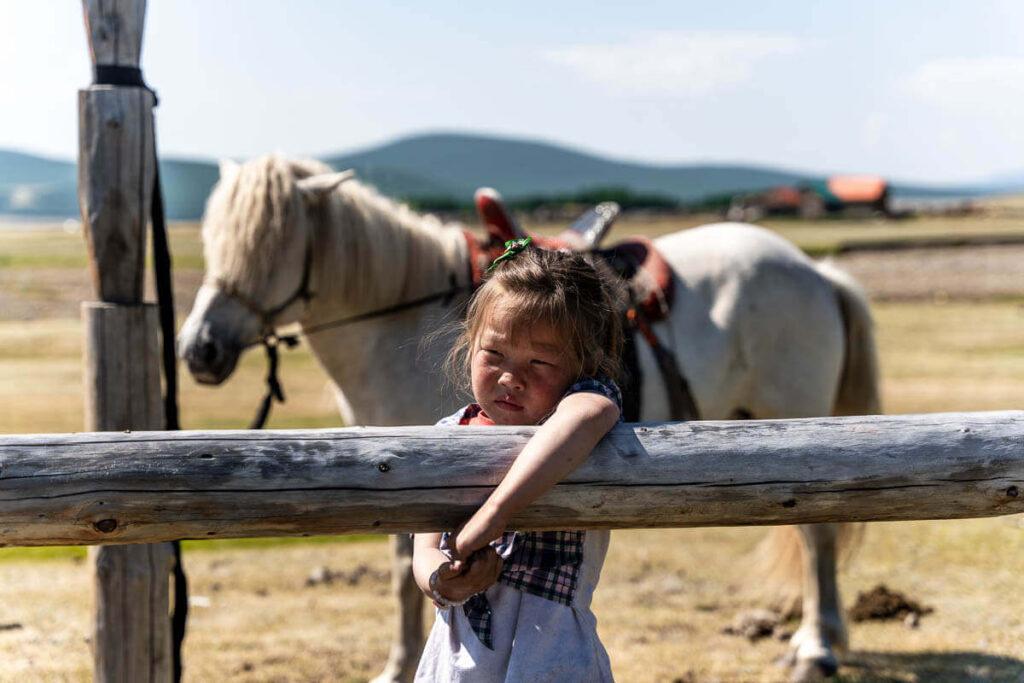
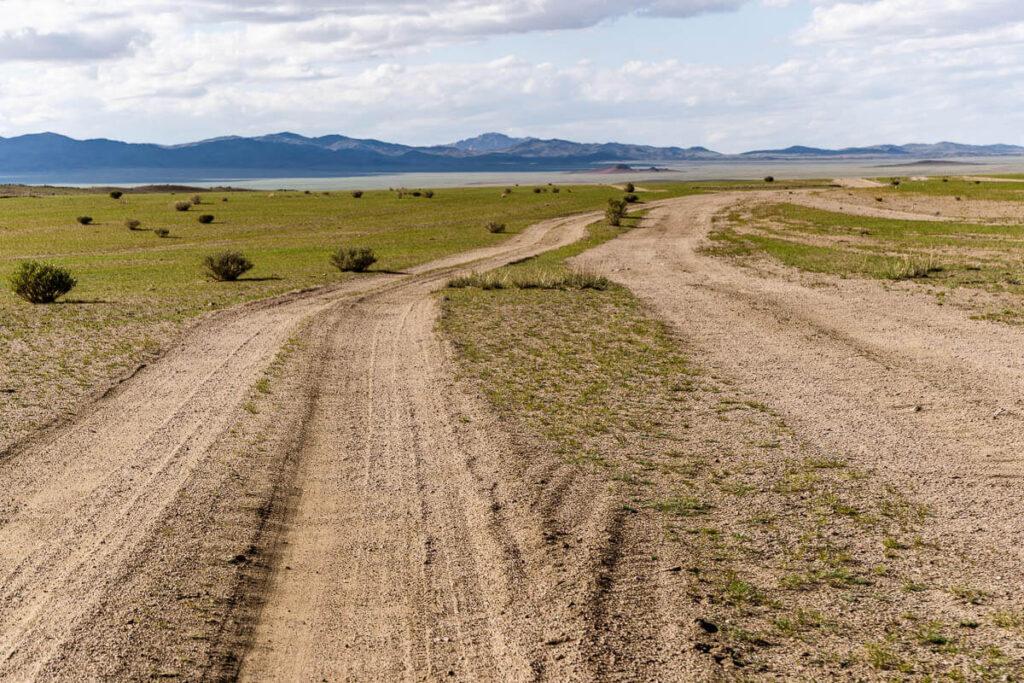
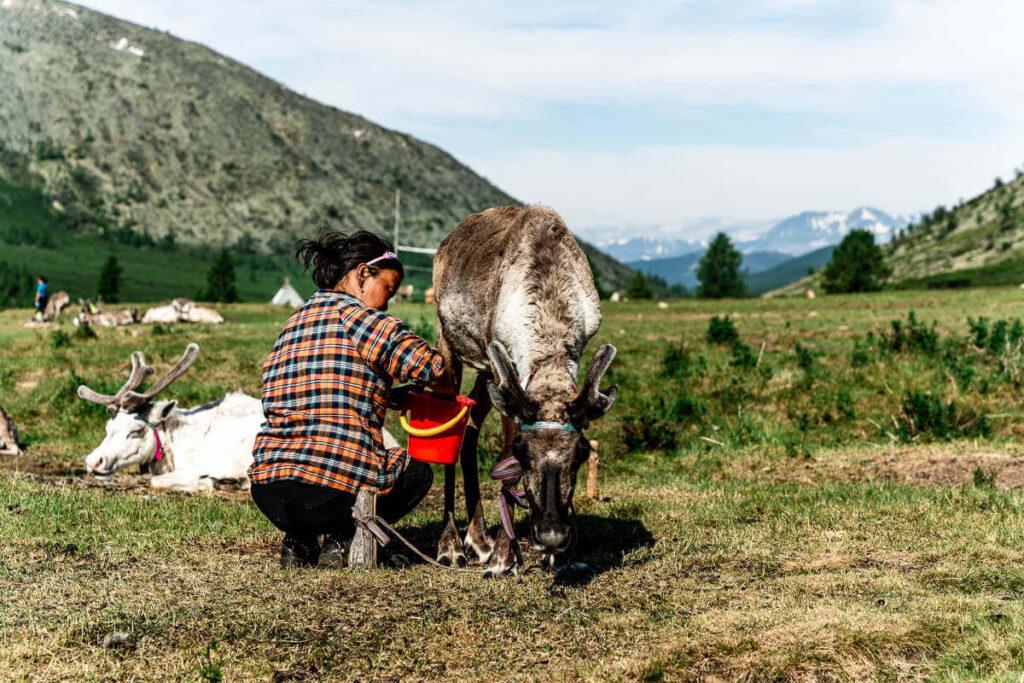
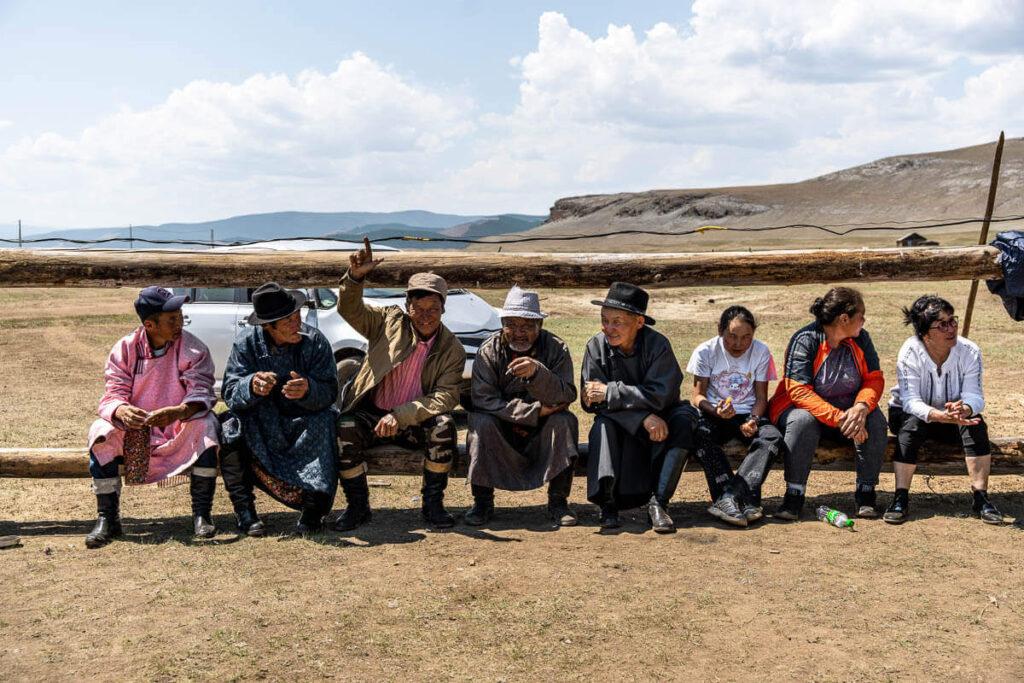
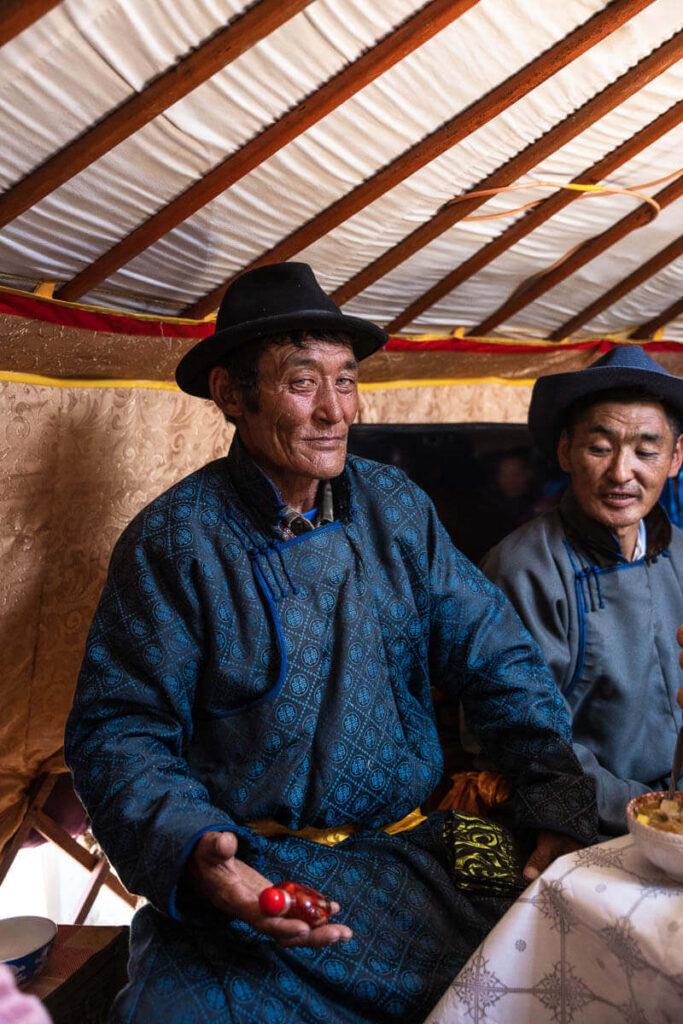
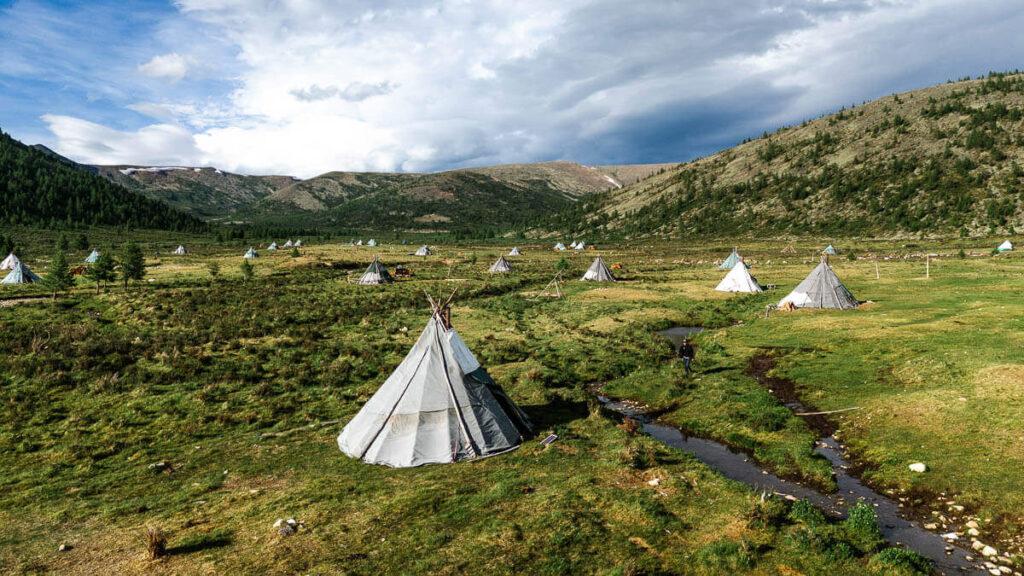
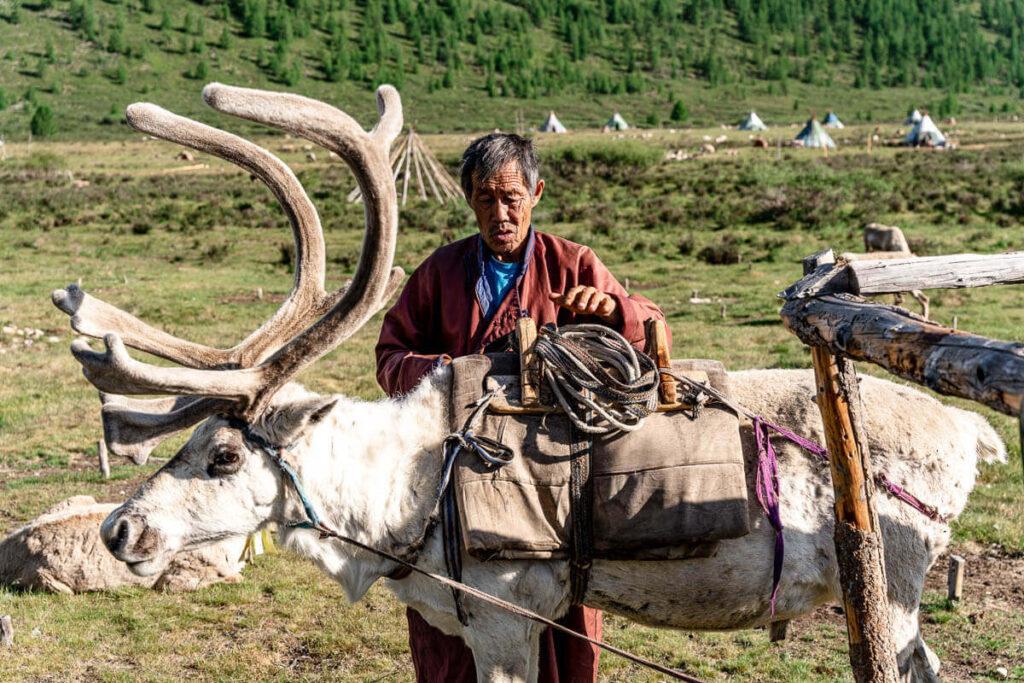
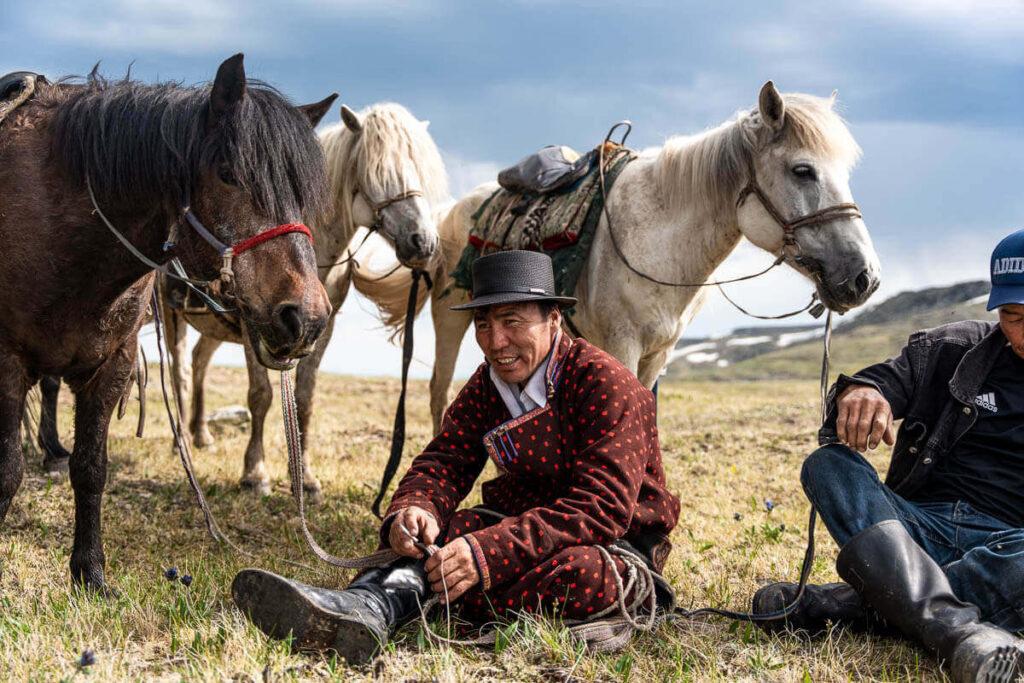
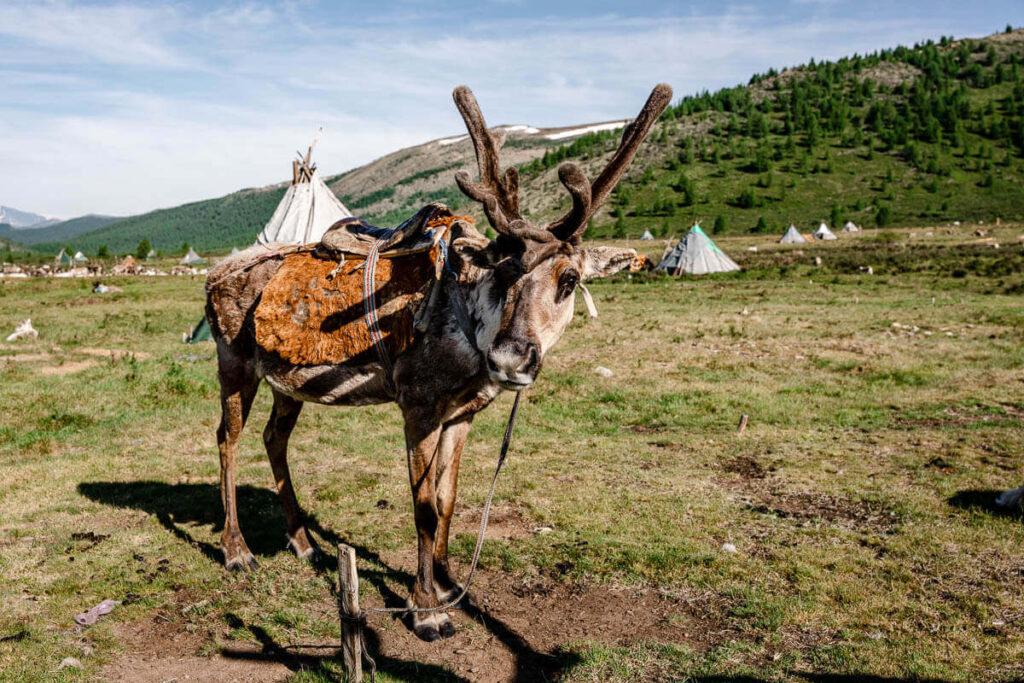
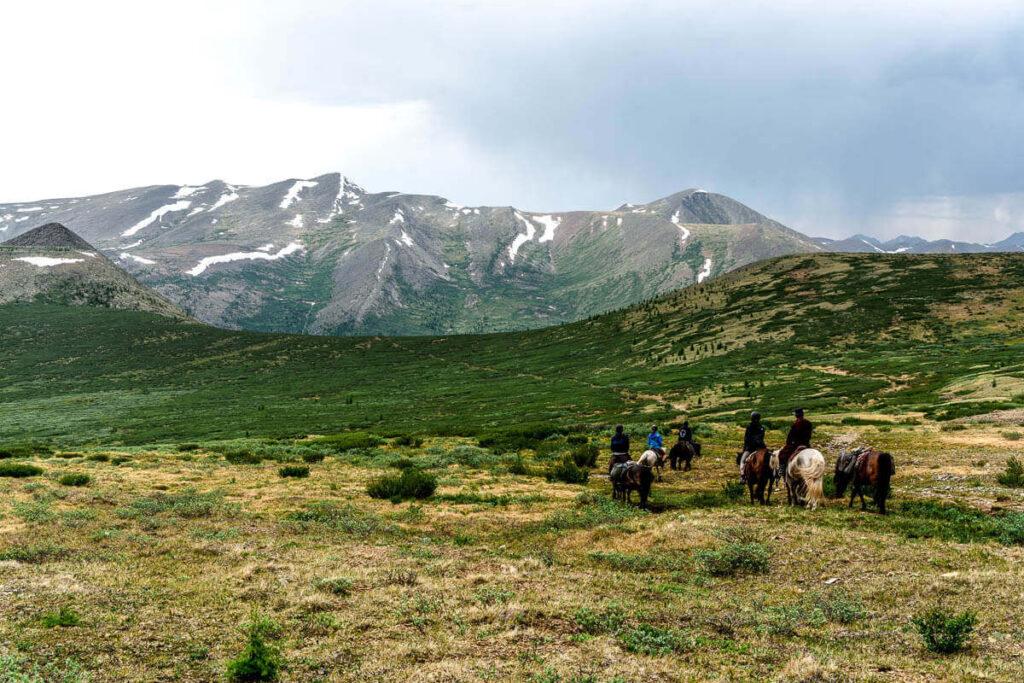

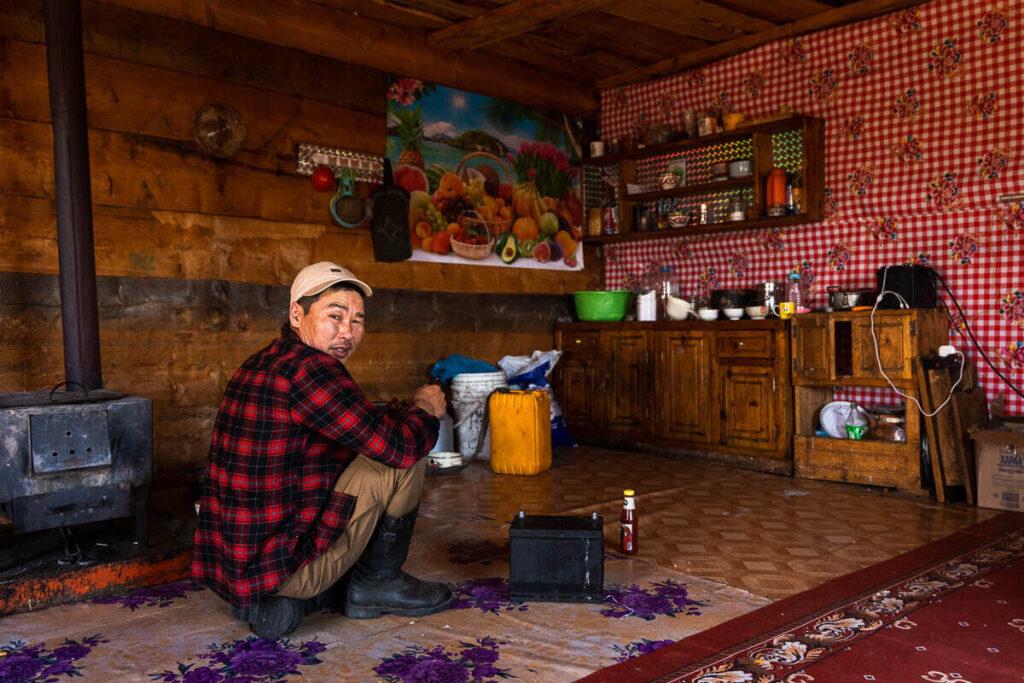
Note that we always keep the itinerary flexible, and it may be subject to change, depending on the political situation.
1 – June 23rd: Arrival in Ulaanbaatar
2 – June 24th: Amarbayasgalant Monastery
3 – June 25th: Mörön
4 – June 26th: Ulaan Ul, coexisting with yak breeders
5 – June 27th: Tsagaanur, coexisting with nomadic family
6 – June 28th: Tsaatan reindeer herders camp
7 – June 29th: Tsaatan reindeer herders camp
8 – June 30th: Back to Ulaan Ul
9 – July 1st: Lake Khövsgöl
10 – July 2nd: Flight to Ulaabaatar
Arrival at the International Airport of Ulaanbaatar (UBN). Airport transfer and hotel check-in.
Ulaanbaatar is not only the coldest capital in the world but also a unique and fascinating city like nowhere else. Here, concrete Soviet-era buildings and monuments blend with Buddhist temples, and traces of nomadic culture remain highly visible in the lively bazaars, which attract nomads from the surrounding rolling steppe. All of this coexists with a rising modern Mongolian society that frequents chic cafés and South Korean restaurants.
Many travelers claim not to like Ulaanbaatar, but at Against the Compass, we definitely do.
Depending on your arrival time, we may have time for a stroll downtown. However, if you want to visit the city properly—including its many museums, temples, and bazaars—we recommend arriving the day before or departing one day later.
Evening drinks and traditional Mongolian dinner.
Overnight in Ulaanbaatar.
After breakfast, we’ll hit the road to Amarbayasgalant Monastery, one of Mongolia’s most beautiful and significant monasteries. Built in the 18th century, Amarbayasgalant was one of the few monasteries spared from demolition during Mongolia’s communist purges.
Set in a gorgeous valley in the Mongolian steppe, the monastery sits in a serene, peaceful landscape surrounded by cattle, ger camps, and pristine nature, making it a perfect place to stop.
Overnight in a ger camp next to Amarbayasgalant Monastery.
Mörön is the capital of Khövsgöl province and offers a good introduction to what provincial towns look like in Mongolia.
After checking into the hotel, we’ll have some free time in the afternoon and evening, which you can use to visit the local museum, where you’ll get an introduction to Tsaatan culture, or explore the local bazaar, where nomads from the surrounding areas come to buy their supplies.
Overnight in Mörön
In the morning, we’ll stop at a wholesale supermarket to stock up on food and supplies for the next few days. Later, we’ll head north, venturing deeper into the wide-open grasslands and rolling hills characteristic of this particular region of Mongolia.
In the afternoon, we’ll arrive at a ger camp run by yak breeders, offering a rare glimpse into the nomadic lifestyle that has sustained Mongolian communities for centuries.
Yaks aren’t widespread across all of Mongolia—they’re mostly concentrated in this region—so not many travelers get the chance to learn firsthand how these remarkable animals are bred and cared for.
Overnight in a ger camp.
Today’s journey takes us to Tsagaanur, the last village before the taiga—a remote settlement near the Russian border and the main staging point for expeditions into Tsaatan territory.
Here, we’ll stay with a Mongolian nomadic family, as that’s not only the best but also the only real way to understand their culture—by observing their day-to-day activities and lending a hand with their daily chores.
Overnight in a ger camp.
After a hearty Mongolian breakfast, we’ll hit the road again, driving for 1–2 hours until we reach the place where we’ll begin our journey into the taiga on horseback.
The ride by horse takes between 4 and 7 hours, depending on the exact location of the Tsaatan Reindeer Herders’ Camp that month, as the families move their camps seasonally.
We plan to arrive at the camp no later than 6 pm. Dinner will be prepared by our cook.
Overnight in a teepee, the traditional accommodation used by the Tsaatan people.
The Tsaatan are a group of nomadic people who live deep in the forests of northern Mongolia. Numbering no more than 450 people in all of Mongolia, the Tsaatan originally come from a region across the Russian border known as the Tuva Republic.
During World War II, to avoid having their young men conscripted into the Soviet army, hundreds of Tsaatan families fled across the border into Mongolia.
Over the following decades, many returned to Russia, but the few hundred who remained became the Mongolian group we will be coexisting with.
Today, while Tsaatan families living in the Tuva Republic in Russia have largely modernized and become Russified, those who settled in Mongolia’s taiga still preserve their traditional way of life. They continue to live nomadically in the forest, moving with their herds of reindeer and maintaining their distinct customs and language.
For a full day, we’ll immerse ourselves in their unique lifestyle, observing how they care for their reindeer and learning about the challenges of life in the remote taiga. The Tsaatan use their reindeer for a wide variety of purposes: producing dairy products like milk and cheese, providing meat, serving as transportation, and carrying loads through the dense forests.
Overnight in a teepee, the traditional accommodation used by the Tsaatan people.
At 8 am, it’s time to say goodbye to our Tsaatan hosts and retrace our journey back to Tsagaanur on horseback.
After the horse trek, we’ll hop into our vehicles and continue on to Ulaan Uul.
Overnight in a guest house.
Stretching over 130 kilometers long, they say that Lake Khövsgöl holds about 2% of the world’s fresh water.
Khövsgöl has a deep connection with Lake Baikal in Russia. Both are part of the same ancient rift system, and Khövsgöl’s waters eventually flow north into the Selenge River, which empties into Baikal.
In Khövsgöl, there’s relatively good infrastructure, so after the rough journey, we’ll stay in a proper lodge with sitting toilets, hot showers, and comfortable rooms.
The flight from Mörön to Ulaanbaatar departs in the afternoon.
End of the tour.
9 nights of accommodation
1 domestic flight
Border permit
Private transportation across Mongolia
All meals (except for lunch on day 1)
English-speaking Mongolian guide
International tour leader
International flights to Mongolia
Alcoholic drinks
Single supplement for 3 nights (€150)
June 23rd to July 2nd, 2026
€1890
10 days
Led by Leti Lagarda
You’ll spend 3 nights in hotels with proper beds and showers (Ulaanbator, Mörön and Khövsöl).
The rest of the nights are in ger camps or teepees, staying just like the nomads do. They are basic, often with no toilets or showers at all.
In hotels, the price of the tour includes accommodation in a twin room. If you want a single room for those 3 nights, you will have to pay an additional €150.
In gers and teepees, single supplement is not available. You’ll usually share with 3–4 people, depending on the size and availability.
Good question.
Mongolia can be rough, but you don’t need to be super fit to join this expedition.
You just need to be flexible and comfortable with long drives on bumpy roads and extremely basic accommodation with no toilet facilities—that’s how most nomads live.
There’s no hiking involved, but you do need to be prepared for the 5–7-hour horse trek we’ll undertake on days 6 and 8.
We’d say a reasonable level of fitness is required, but at the end of the day, it’s more about your mindset. If you can handle riding a horse for a few hours and getting off the grid, you’ll be absolutely fine.
Chinggis Khaan International Airport (UBN) is the main airport in Ulaanbaator.
Turkish Airlines and Lufthansa have flights there regularly.
Also, check the local airline (Mongolian Airlines (MIAT). It conects Ulaanbaator with many cities in Europe like Berlin or Amsterdam, but also the USA and East Asian cities like Tokyo, Hong Kong or Seoul.
Alternatively, adventurous travelers can enter the country by train from either China or Russia. Land borders are fully operational.
No, you don’t. Most nationalities can get a free visa on arrival.
We will limit it to a maximum of 12-13 people.
To secure your spot on the tour, we require a deposit.
We accept payments in both Euros and US dollars. All details will be shared upon booking your spot.
Yes. If you want to join any of our expeditions, you must purchase travel insurance.
We recommend IATI Insurance.
Why do we recommend IATI?
Against the Compass has been a partner of IATI for a very long time. We personally know their CEO and marketing team, and we collaborate regularly, so in the unlikely event that something happens, we know exactly what to do.
Moreover, IATI Insurance covers all the countries where the FCDO advises against all travel, something that most insurance companies don’t.
You can also benefit from a 5% discount by purchasing it through the link below.
Get a quote here to claim your discount
Can I use a different company?
Yes, you can, as long as your insurance covers the destination you’re travelling to.
Please check our General Conditions.
However, specific conditions might apply depending on the destination. Example: when the trip includes airfare.
Full details will be shared upon booking your spot.